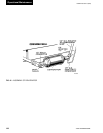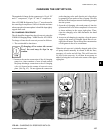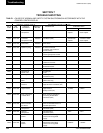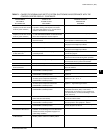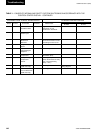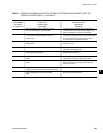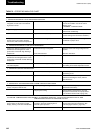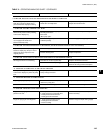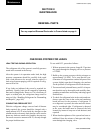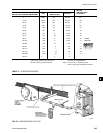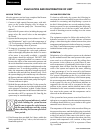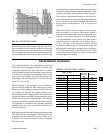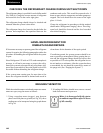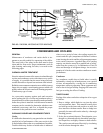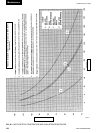
YORK INTERNATIONAL
144
FORM 160.55-O1 (604)
Maintenance
SECTION 8
MAINTENANCE
RENEWAL PARTS
For any required Renewal Parts re fer to Forms listed on page 4.
LEAK TEST ING DUR ING OP ER A TION
The refrigerant side of the sys tem is care ful ly pressure
test ed and evac u at ed at the factory.
After the system is in op er a tion under load, the high
pressure components should be carefully leak test ed
with a leak detector to be sure all joints are tight. If a
leak exists frequent purg ing will be required or re frig -
er ant will be lost.
If any leaks are indicated, they must be repaired im-
me di ate ly. Usu al ly, leaks can be stopped by tight en ing
ß are nuts or ß ange bolts. However, if it is nec es sary to
re pair a weld ed joint, the refrigerant charge must be
re moved (See “Han dling Refrigerant for Dis man tling
and Re pairs”, page 140).
CONDUCTING PRES SURE TEST
With the refrigerant charge removed and all known
leaks repaired, the system should be charged with a
small amount of R-22 mixed with dry ni tro gen so that
a ha lide torch or elec tron ic leak de tec tor can be used to
detect any leaks too small to be found by the soap test.
Do not use ex ces sive amounts of R-22; use only enough
for proper leak detection.
To test with R-22, proceed as fol lows:
1. With no pres sure in the sys tem, charge R-22 gas into
the system through the charg ing valve to a pres sure
of 2 PSIG.
2. Build up the system pressure with dry nitrogen to
ap prox i mate ly 10 PSIG. To be sure that the con-
cen tra tion of refrigerant has reached all parts of the
sys tem, slight ly open the oil charging valve and test
for the pres ence of refrigerant with a leak detector.
3. Test around each joint and factory weld. It is im por -
tant that this test by thoroughly and carefully done,
spending as much time as necessary and using a good
leak detector.
4. To check for re frig er ant leaks in the cooler and con-
dens er, open the vents in the cooler and condenser
heads and test for the presence of re frig er ant. If
no refrigerant is present, the tubes and tube sheets
may be con sid ered tight. If re frig er ant is de tect ed
at the vents, the heads must be removed, the leak
lo cat ed (by means of soap test or leak de tec tor) and
re paired.
5. When absolute tight ness of the sys tem has been es-
tab lished, blow the mixture of ni tro gen and re frig -
er ant through the charg ing valve.
CHECKING SYSTEM FOR LEAKS



